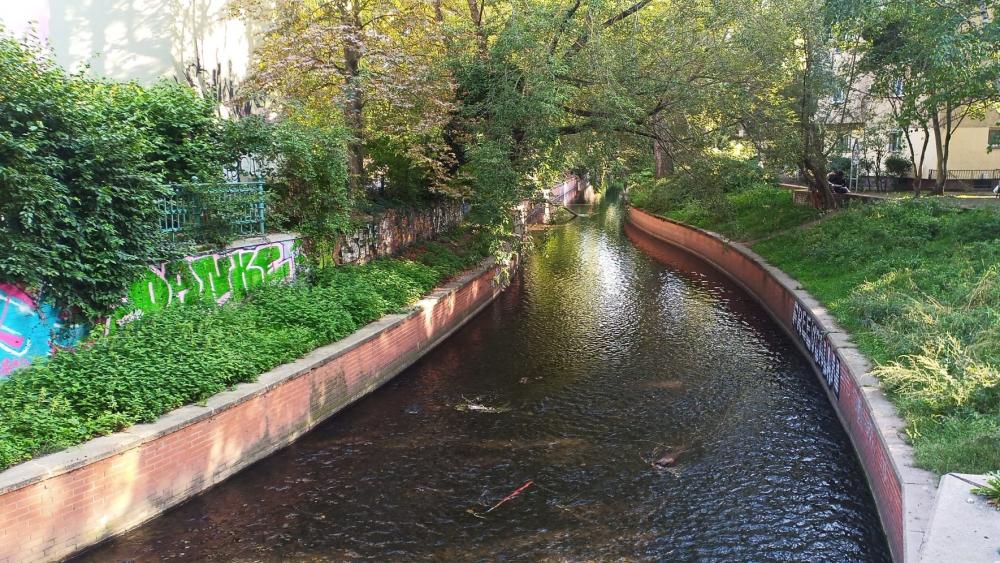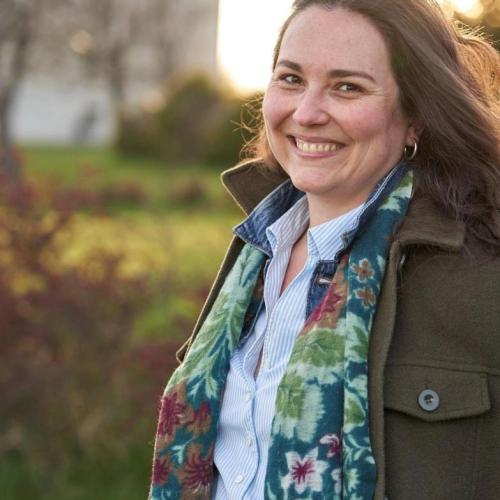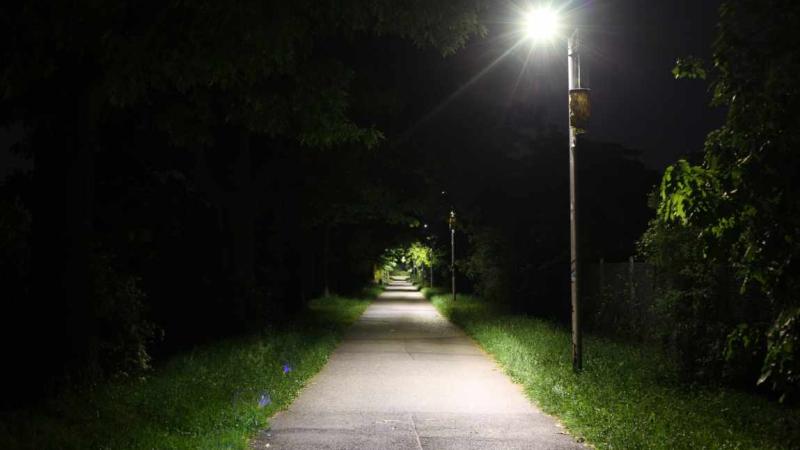
In summer, the Panke River in Berlin consists mainly of treated wastewater. | Photo: Maria Warter
„Just like our gut, freshwater ecosystems need a functioning microbiome. Bacteria and other microorganisms form the basis of food chains and metabolic processes, as well as the self-purification capacity of water bodies", said Maria Magdalena Warter, an IGB researcher and the lead author of a new study published in the journal Hydrology and Earth System Sciences. A healthy stream microbiome includes bacteria, archaea and microalgae.
Over the course of a year, her research team analysed the water flows, origins of the water, chemical parameters, and the microbial community at several sampling points in the Wuhle, Erpe, and Panke rivers and several ponds in Berlin. Using stable isotopes to determine the origin of the water and genetic methods known as environmental DNA to detect microorganisms, the team revealed a clear link between the origin of the water and the composition of bacterial communities.
While the researchers found typical freshwater bacteria and diatoms or green algae in the Wuhle and urban ponds, the water samples from the Erpe and Panke lacked a typical aquatic microbiome. „We found many bacteria that indicate a greater influence of anthropogenic water sources and which may not be present in more natural systems “, said IGB researcher Prof. Michael Monaghan, who analyzed the microbiological samples in the study. According to the study, this is due to the high proportion of treated wastewater discharged into these rivers.
The water balance of the dry city of Berlin is heavily influenced by treated wastewater
Only around 580 mm of rain falls in Berlin per year. More than half of this is lost to the landscape water balance through evapotranspiration from soil and plants. Consequently, a significant proportion of the water in many watercourses is treated wastewater. Depending on the season, 80 to 100 per cent of the water in the Erpe and Panke rivers consists of treated effluent. The researchers' analyses also revealed seasonal differences: The diversity of the microbiome was lower in summer than in winter. This is because, during dry periods, groundwater and precipitation play a smaller role in the water balance than treated effluent. In addition to the origin of the water, temperature also significantly influenced the composition of the microbiome. Other influencing factors were the proportions of dissolved carbon and oxygen.
An unfavourable microbiome can reduce the success of renaturation measures
To improve water quality and habitats for animals and plants, both watercourses have undergone extensive restoration over the last ten years. To this end, transverse structures have been removed and stillwater zones created. Additionally, the river's course was partially restored to its original natural state.
"As long as rivers such as the Erpe and the Panke receive a lot of water from urban sources, their good ecological status and restoration success is still threatened by high loads of nutrients as well as pollutants and trace substances. The same applies to the diversity bacteria", said Maria Magdalena Warter. "Purely structural changes to the watercourse, such as the removal of bank stabilisation, do have an impact on aesthetics and create near-natural watercourse structures. However, if the water body consists of almost 100 per cent treated wastewater, the ecological potential remains potentially limited." This was also shown by the study of other groups of organisms: In both watercourses, the research team found allow diversity of phytoplankton and aquatic plants, including mainly species that tolerate high nutrient loads.
Urban water bodies have enormous potential as nature-based solutions to support climate resilience, groundwater formation and water storage
Especially in times of urbanisation and increasing climate extremes, urban water bodies are of enormous importance to us humans. As nature-based solutions, they can increase water retention, enhance groundwater recharge, alleviate the urban heat island effect, and support green spaces, while also delivering major amenity and health benefits for residents. However, in order to be able to use and enjoy urban waters sustainably, adaptable management and restoration concepts are required. In future restoration measures, microbial processes should be taken into account in order to create balanced ecosystems and improve the ecological status of degraded ecosystems.
******
Methodological approach:
An important novel aspect of this study was the combination of close monitoring using environmental DNA, hydrochemistry and stable water isotopes conducted over a full year and several seasons in a complex urban environment. The resulting data set is unique in its ecological and hydrological breadth - there are few comparable data sets, especially for urban systems. Using this integrative approach, the interactions between hydrology and microbial community patterns could be explored and linked to climate and urbanisation effects.







